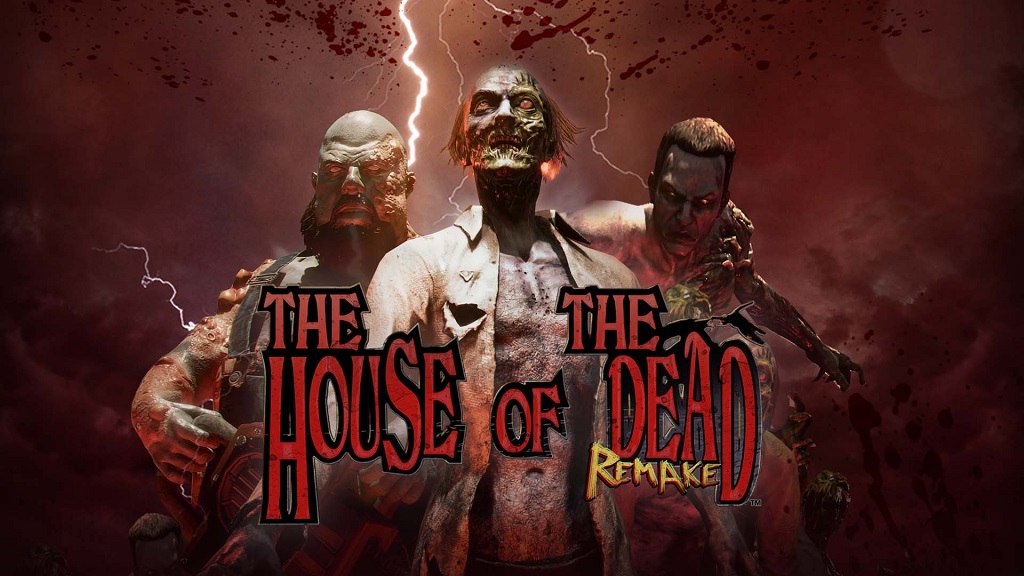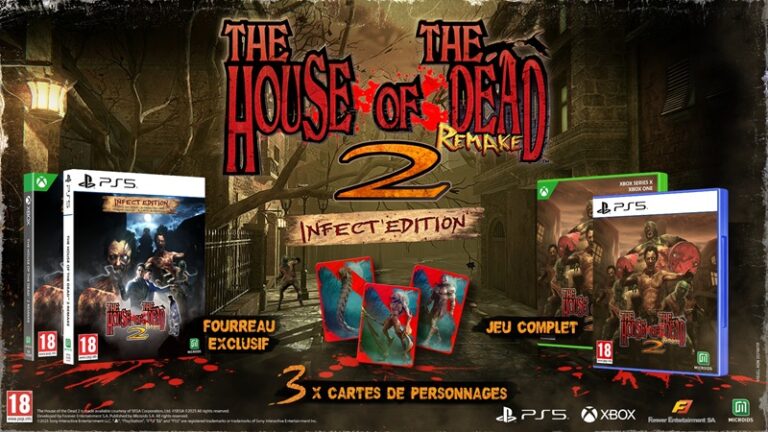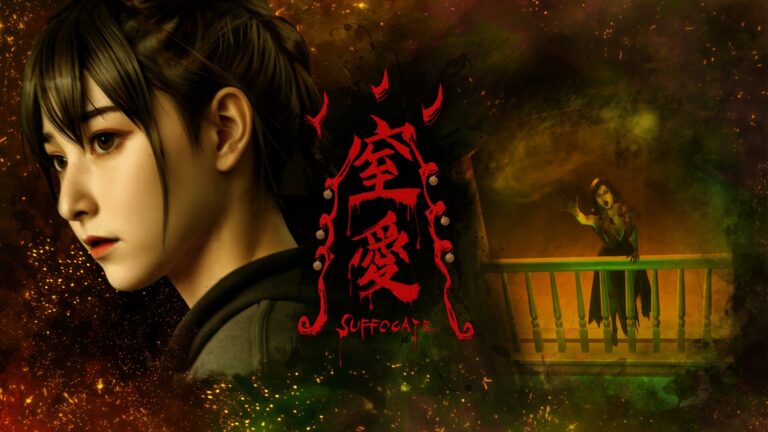
In 1996, Sega unleashed the original House of the Dead to the world, the first 3D horror-themed light gun game which, at the time, featured some of the best graphics and sound possible. Flash forward 25 years later and we’ve finally gotten a new take on the game in the form of the House of the Dead Remake from Forever Entertainment and MegaPixel. The remake seeks to update the original by taking advantage of all the bells and whistles afforded to it by modern gaming.
The remake was announced back in 2019 and went through a good chunk of development time to end up where it is now. As the details trickled out, there were a lot of questions about whether this remake would offer anything new on top of the original game, how much it would stray from the content of the original, and how it would control on modern platforms without a light gun, among other things. Today we can finally take a deep dive and see how this remake compares to the original and answer as many of those questions as possible.

From the moment you start the game and get past the opening logos, you’re immediately thrust into a fully re-created version of the opening attract mode from the arcade game, remade shot-for-shot with updated visuals and sound. It’s an absolute treat for fans of the game who have watched this intro countless times in the arcades. This intro sets a good benchmark for what to expect from this remake by demonstrating that, besides new visuals and sound, everything else is a perfect copy of the arcade game, a standard that stays pretty consistent throughout the experience.
Where this remake starts to diverge from the original is in its variety of content, providing a lot more than what the arcade or Sega Saturn versions had to offer. The main menu alone has a long list of different options and modes to choose from. Aside from the main campaign, the main menu also lets you access several new things, including a full statistics page with detailed stats of everything you’ve done in the game, online and local leaderboards, a gallery mode, and a robust options mode with more choices than you could ever ask for.

The main campaign mode is where you’ll do your full playthrough of the game. After choosing this option, the game opens another menu with some additional options before you start playing, which includes difficulty, scoring system, the option to play with 1 or 2 players, and choosing between the normal arcade mode or the new Horde mode. This Horde mode isn’t the typical type of mode that you’ll see using that name in most modern games, it’s more of a more dense version of the arcade game where instead of just 1-3 enemies attacking you at a time, it’s often about 6-8 of them at a time. This is where the HOTD series ended up going later on with HOTD4 and Scarlet Dawn.
While Horde mode is pretty fun to play from the get-go, it’s more beneficial to wait until you’ve unlocked some of the extra weapons to really have a blast with it, but we’ll talk more about that later. For now, let’s take a look at how the gameplay stacks up.

As previously mentioned, the facelift this remake provides to the game is cosmetically substantial without really touching much of the gameplay at all, which turns out to be a pretty great thing. All the core gameplay is intact, with everything still being in the same spot as it always was, but the new visuals really help in the realms of storytelling, atmosphere, scares, and immersion, which is a joyous thing for fans of the original.
While the original HOTD had real-time gore and dismemberment effects, those effects are turned up to 11 here, with tons of visceral gore and damage being done as you shoot up your foes. Foes will be gradually dismembered with huge spurts of blood coming out from every shot, with many nothing more than a pile of limbs and flesh on the ground when you’re done with them. This new level of polish and attention to detail keep the action and excitement high with every encounter.
All these new visual elements make the game feel that much more cinematic and engrossing, yet it still has all the quirks and weirdness that the original had, including weird enemy animations, cheesy voice acting, and equally fun but cheesy music.

The new sound design also contributes to the immersion, with the sound effects being similar to the original, but with much more realistic elements, including shot sounds changing or echoing depending on the type of environment you’re in, as well as the impact and gore sounds being very strong and pronounced, with tons of strong hit sounds and wet, splashy blood sounds constantly assaulting your ears in the best way possible.
The updated voice acting is fine for what it is, but it doesn’t quite match the tone of the original’s iconic and ridiculous 90s horror voice acting. While it is updated, it still keeps a tinge of silliness and campiness to it so it still feels cheesy without feeling a bit out-of-place with the new visuals and other new sound design updates. Unfortunately, the “RELOAD” voice from the original has been replaced with a slightly more annoying and less silly reload prompt, and even if you can get used to it, it stays fairly annoying when it ends up repeating several times.
The updated music is quite fitting and actually better than the original in some ways, while not quite as good as the original in others. While it’s a bit of a mixed bag, the music is successful overall at what it’s trying to do and keeps a general feel of the original while also updating it to fit the new aesthetics of the remake. Nothing to truly complain about, some tracks just don’t stand out as much as they could’ve or did in the original game.

While players familiar with the original version of the game will mostly get what they expected from this remake, a variety of different options elevate it beyond a simple update of the arcade game experience.
One of the biggest new features that actually affects gameplay is the unlockable armory, which you can unlock by finishing a run of the main game while saving all scientists and accessing the secret room in Stage 4. After unlocking this, you’ll be able to start running through the main game again with entirely new weapons scattered throughout all 4 stages, immediately giving some extra motivation to play the main game again to unlock them all.
This new selection of weapons truly changes the game, and adds a ton of replay value and variety to the gameplay, letting you experience The House of the Dead in the way you want to enjoy it. Each weapon introduces an entirely new playstyle. For example, the assault rifle makes the game feel closer to HOTD4 or Scarlet Dawn, giving players a fully-automatic machine gun to mow down enemies with. While these new weapons might feel overpowered when playing the normal campaign, using them in Horde mode is fun and feels more appropriate, providing many more targets for your firearms to destroy.

Aside from the new armory, the Gallery also features a creature bestiary, where you can unlock 3D models and information for each enemy you kill, as well as an achievement/trophy section where you can unlock various medals for completing different tasks in the game.
Now we can get into the nitty-gritty of the technical details, which is where a lot of questions have arisen regarding the game and the platform it’s been released on, the Switch. Starting with the general game options in the options menu, there’s an insane amount of options for customization, accessibility, and many more things packed in these menus. Aside from the typical and expected options for language, HUD, brightness, and sound, there are many more pertaining to controls and gameplay.

First up is the smart inclusion of a performance mode option to increase the framerate and smoothness of the game overall, which is really important for an arcade-style action game like this, and especially for the Switch console, which is notoriously underpowered compared to its modern competitors. This mode greatly improves performance in handheld mode from the testing I was able to do, but the game generally runs better in docked mode, even with the performance mode off. There tends to be a lot of discrepancies that come up between the docked and handheld modes for Switch games, but at least this gives you some options to optimize to your liking.
The options also have several gameplay options like an auto-reload feature that greatly increases accessibility and things like changing the color of the cursors and shot flashes for those who may have issues seeing certain colors or telling them apart from each other, and it’s nice to see so many accessibility-related options included here.
The visuals aren’t the prettiest thing in the world, given the low output resolution and power of the Switch console, but they’re more than sufficient for what the game is trying to do and honestly a little bit better than I even expected they’d be, given the platform. Unfortunately, static images just don’t do the game justice, but seeing it in motion clears up a lot of the small visual hiccups that rear their head in the screenshots.
Another small technical aspect to discuss is the load times, which can be a little bit longer than you’d generally expect with this type of game, with the load times between each level and after loading into the game from the menu generally ranging around 30-40 seconds. While it’s not the end of the world, it would be nice if it was a little snappier, especially when going for multiple playthroughs, but hopefully, this may be optimized later through some updates.

Next up is one of the biggest questions most people had about this project, which has to do with the control of the game, and it’s one that has a very complex answer. Since there was fairly obviously not going to be an official gun controller created for this game, most people wondered how it would actually control, since light gun games are notoriously not very fun when using a regular analog stick or d-pad and controller. The good news is that there are tons of options on how to approach this on the Switch version, and even if none of them is perfect, somewhere within all the options, you’ll likely find something that works for you.
While the option to use the analog stick is there, most people will have a better time using the gyro aiming with the JoyCons, which comes the closest to replicating the feel of using a gun controller. This makes it so when rotating or moving the JoyCon in any direction, your cursor will move on the screen relative to your hand or wrist movements, and there are dozens of options you can use to customize this experience, including sensitivity, dead zone settings, which JoyCon to use, and even using a combination of the gyro and the analog stick together for more control.

While you can just hold the JoyCons in both hands and aim with the gyro that way, another thing that can help with this experience is to get one of the unofficial gun attachments for the Switch JoyCons, as shown above, as it helps with stability of holding the gyro still and leads to more accurate aiming overall. The gyro aiming combined with the analog stick is certainly the most comfortable of all when used in combination with the button press that re-centers your reticle to the center of the screen again. It’s a bit of a learning process and getting accustomed to this control scheme for it to feel right, but it’s the closest we can get for now.
Unfortunately, even with all the options provided, none of them will ever feel just right and all options will require some sort of compromise or extra work to use since the JoyCons do not have a very advanced gyro technology inside them and it makes for your shot constantly going off-center and needed to be re-centered generally every few seconds. Compared to all other Switch games that use the gyro aiming like this, HOTD Remake is absolutely the best of the bunch, since the extra options go a long way, but it’s still an imprecise and awkward way to aim in the grand scheme of things, even if more accurate to the feeling of a light gun.
This just gives us more hope that a PC version will be released in the near future with more options for mouse control or PC light gun setups, which does seem to be on the horizon, it’s just a matter of time. Once a PC version is available, we’ll be able to have an even better experience than the package we’ve got on the Switch so far, and if handled well enough, I’m confident it could be one of the best light gun titles of all time.

With light gun games hitting a massive lull in the last few years, it’s great to see a new title breathe some life back into the genre. As a lifelong fan of the HOTD series, this remake lives up to all the excitement I’ve had for the last three years waiting for its arrival and oozes love and appreciation for the original game and the series overall.
House of the Dead Remake does everything a remake is meant to do. It authentically updates a classic game for modern audiences as well as returning fans of the series. While the main game is a short, 30-35 minute arcade rollercoaster ride, the extra features and options help it stand out and justify its reasonable $25 price tag.
It’s certainly not going to change your mind if you’ve never been a fan of the House of the Dead series or light gun games in general, but if you appreciate either one, this game is an absolute treat and is one of the best in its niche genre.
 (8.5 / 10)
(8.5 / 10)
Great
 (8.5 / 10)
(8.5 / 10)Rely on Horror Review Score Guide
A Nintendo Switch review code was provided by the publisher.

 IDOLxISxDEAD
IDOLxISxDEAD


